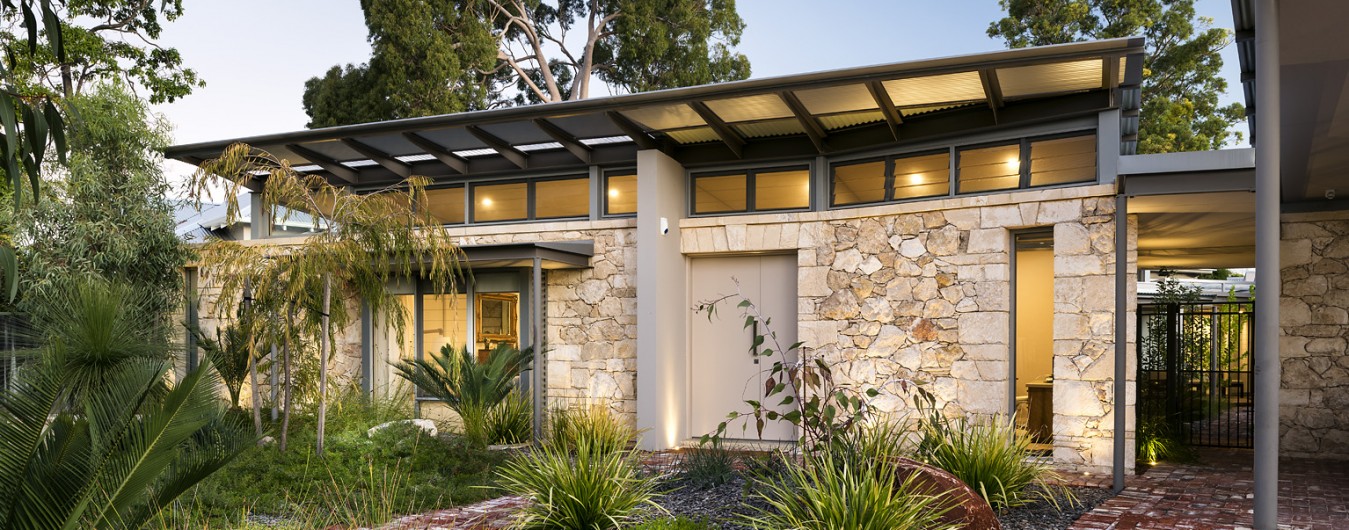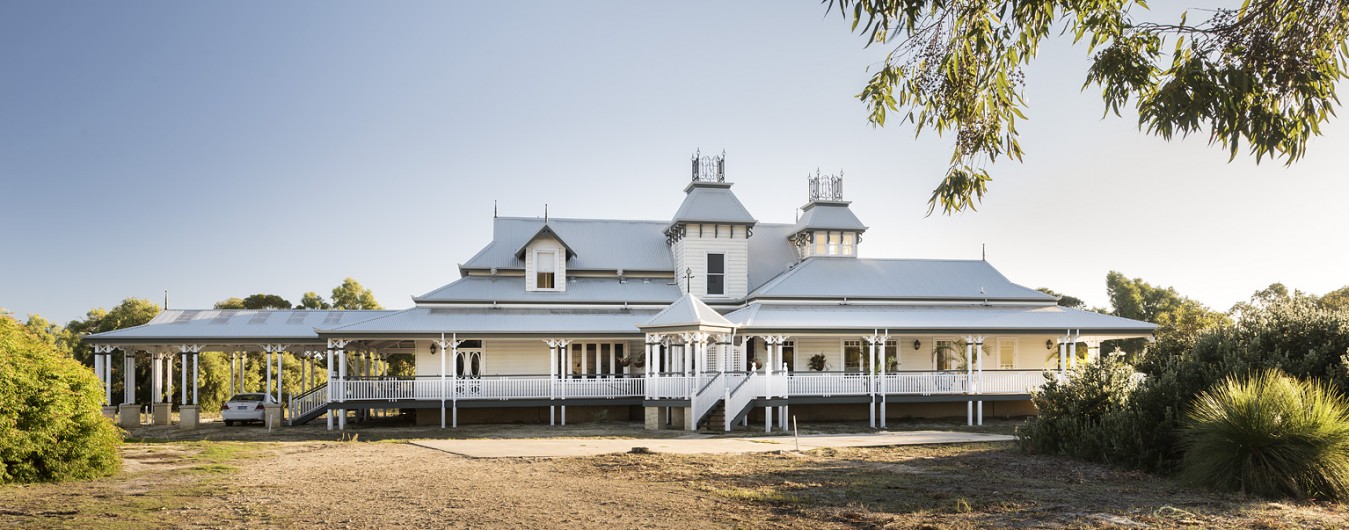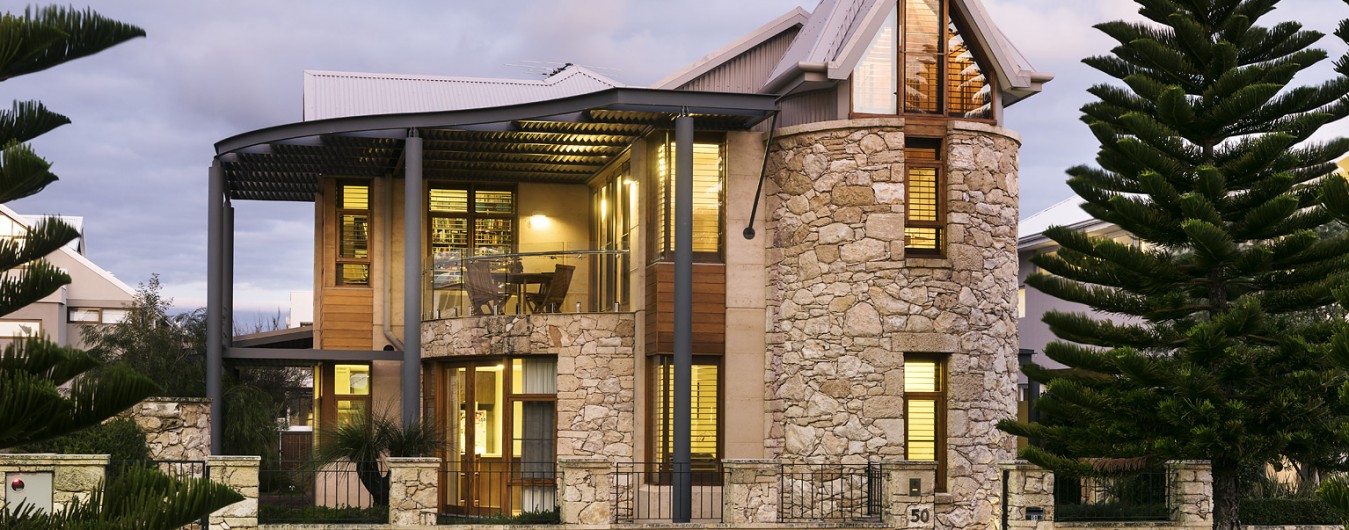If most Australians were aware of what was going to happen to Planet Earth this century, they would be lining up to buy a house and land package from Mike Hulme. His Foxcliffe development at Witchcliffe, near Margaret River, Western Australia, has it all. Having worked with Mike for many years on many land subdivisions, I know he is fully aware of how to design a sustainable residential subdivision and set guidelines that work. It is imperative that solid guidelines are attached to property developments to deliver outcomes that are a win for the residents, the community and the environment, by reducing energy and water and conserving the natural world.

Foxcliff Farm Ecovillage - Witchcliffe
Joining forces with a real estate development giant with such high ethics as the Perron Group is also a smart move for all involved. It gives the project the financial clout it needs to succeed. Whilst so many dream, very few successfully act and deliver. Mike Hulme is one of those people. Hulme always commences his developments in the right way. He starts by considering the needs and best interests of the community. In Margaret River, not everyone is a retired real estate agent or doctor, or has a large bank account. They may not be rich in financial resources but they are good, down-to-earth people who greatly appreciate nature and want to help co-exist with it. Unfortunately the huge explosion in the demand for large expensive houses by those mainly benefiting from the mining boom in Western Australia, has pushed up consumption, energy use and the sizes of houses. Refer to our article ‘Politics of Housing in the Western World’.
Affordability and the Environment
With building costs skyrocketing over the last few years, many people have had the dream of owning their own home all but destroyed. Mike Hulme decided from the beginning when buying the land, to not only to do something for the environment, but to also tackle the issue of affordability. By producing correctly designed, small blocks as part of a wider community, he has combined economies of scale and collective action to reduce the costs of a house and land to within the reach of the average person in the region, as well as to make it attractive for similar people in the city to opt for an alternative style of living. His timing is impeccable as usual, with energy use set to increase by 50% world wide just compounding the greenhouse effect, and producing huge increases in energy prices in the next couple of decades, as all known sources of energy are depleted. His planned lifestyle for the residents may be ‘alternative’ now, but won’t be for much longer. If the world keeps going the way it is, then we are going to need more of this style of living. The growth of energy use and the depletion of the world’s energy resources will ensure that conventional lifestyles will not be afforded by anyone except the ‘stupid’ rich, and those lacking public consciousness. Refer to our article on world energy and population trends for the rest of the century: ‘Energy Consumption Growth‘
Healthy food and fresh clean water is the key to a healthy life and through cutting-edge water technology and productive landscaping, Foxcliffe will deliver these precious commodities to all of it’s residents and food and water bills will be kept to a minimum. This will be a great environment to bring up children and create a generation of socially and scientifically, sustainable people.
Sustainable Community Living
Perron & Hulme Developments have had the good sense to enlist Josh Byrne, environmentalist and expert sustainable landscaper and gardener, to ensure that the gardens and landscape are designed in detail to complement Mike Hulme’s vision for the estate. Asked what was the vision for the development Mike Hulme answered as follows: “The vision for the Foxcliffe Farm Ecovillage is to create a world leading sustainable community in Witchcliffe. The village will comprise 180 strata titled home sites with an extensive range of onsite infrastructure and services to create a world-leading example of sustainable development that achieves:
- 100% net power generation on site with solar PV and wind turbines,
- 100% self sufficiency in water through onsite rainwater harvesting,
- 100% production of seasonal fresh produce on site,
- Class A recycled water for household garden and toilets,
- all homes to front expansive open space and community gardens,
- high efficiency, solar passive homes,
- affordable house and land packages,
- onsite wind turbines to provide free charging for up to 100 electric vehicles,
- a local energy grid that employs smart grid technology.
Solar-e endorses Foxcliffe
We at solar-e.com are pleased with this initiative and wish Mike Hulme every success for the project. Solar energy in the forms of passive solar design of the houses, photovoltaic panels and solar water heating will form a lynch pin to make this development a truly ‘micro solar’ economy, when combined with the organic approaches to water collection, grey water and waste recycling, and the generation of bio fuels courtesy of the greatest energy gift, the sun.
The consequences from this development will be far reaching.
Foxcliffe Hhas Iit Right A Land Development for the 21st Century
By Garry Baverstock AM
If most Australian’s were aware of what was going to happen to Pplanet Eearth this century, they would be lining up to buy a house and land package from Mike Hulme. His Foxcliffe development at Witchcliffe, near Margaret River, has it all.
Having worked with Mike for many years on many land subdivisions, I know he is fully aware of how to designlay out a sustainable residential subdivision and set guidelines that work. It is imperative that solid guidelines are attached to property developmentsto property buyers, d to deliver outcomes that are a win for the residents, the community and the environmentenvironment, their comfort and energy efficiency and the community in, by reducing energy and , water and conserving the natural world.
Joining forces with a real estate development giant with such high ethics aslike the Perron Group is also a smart move for all involved. It gives the project the financial clout it needs to succeed. Whilst sSo many dream, very few successfully act and deliver. Mike Hulme is one of those people.
Hulme always commences his developments in the right way. He starts by considering the needs and best interests of the community. In Margaret River, not everyone is a retired real estate agent or doctor, or hasve a large bank account. They may not be rich inhave much financial resources but they are good, down to earth people who greatly appreciate nature and want to help co–exist with it.
Unfortunatelytely the huge explosion in the demand foreconomy of large expensive houses byfor those mainly benefiting from the mining boom in Western Australia, has pushed up consumption, energy use and the sizes of houses. (rRefer to our article ‘Politics of Housing in the Western World’ http://solar-e.com/articles. ).
With building costs skyrocketing over the last few years, many people have had the dream of owning their own home all but destroyed. Mike Hulme decided from the beginning when buying the land, to not only to do something for the environment, but to also tackle thehe has decided to crack the issue of affordability once and for all. By producing correctly designed, small blocks as part of a wider community, he has combined economies of scale and collective action to reduce the costs of a house and land to within the reach of the average person in the region, as well as to make it attractive for similar people in the city to opt for an alternativee style of living.
His timing is impeccable as usual, with energy use set to increase by 50% world wide just compoundingexasperating the greenhouse effect, and producing huge increases in energy prices in the next couple of decades, as all known sources of energy are depleteds.
His planned lifestyle for the residents may be alternativee now, but won’t be not for much longer. If the world keeps going the way it is, then we are going to need more of this style of living. The growth of energy use and the depletion of the world’s energy resources will ensure that conventional lifestyles will not be afforded by anyone except the “stupid” rich, and those lacking public consciousness. (R refer to our article on world energy and population trends for the rest of the century (refer to: “Energy Consumption Growth” http://solar-e.com/articles ) ,for the projections for energy and population by the end of the 21st century)
Healthy food and fresh clean water is a the key to a healthy life and through cutting–edge water technology and productive landscaping, Foxcliffe with the help of Josh Byrne will deliver these precious commodities to all of it’s residents, every well and food and water bills will be kept to a minimum. This will be a great environment to bring up children and create a generation of socially and, scientifically, and sustainableility people.
Perron & Hulme Developments have had the good sense to enlist Josh Byrne, environmentalist and expert sustainable landscaper and gardener, to ensure that the gardens and landscape are designed in detail to complement Mike Hulme’s vision for the estate.
Asked what was the vision for the development Mike Hulme answered as follows:
The vision for the Foxcliffe Farm Ecovillage is to create a world leading sustainable community in Witchcliffe. The village will comprise 180 strata titled home sites with an extensive range of onsite infrastructure and services to create a world-leading example of sustainable development that achieves:
100% net power generation on site with solar PV and wind turbines,.
100% self sufficiency in water through onsite rainwater harvesting,.
100% production of seasonal fresh produce on site,.
Class A recycled water for household garden and toilets,
aAll homes to front expansive open space and community gardens,.
hHigh efficiency, solar passive homes,.
aAffordable house and land packages,.
oOnsite wind turbines to provide free charging for up to 100 electric vehicles,.
and Aa local energy grid that employs smart grid technology.
Solar-e endorses Foxcliffe
We at solar-e.com are pleased with this initiative and wish Mike Hulme every success for the project. Solar energy in the forms of passive solar design of the houses, photovoltaic panels and solar water heating will form a lynch pin to make this development a truly ‘micro solar’ economy, when combined withto the organic .
approaches to water collection, grey water and waste recycling, and the generation of bio fuels courtesy of the greatest energy gift, the sun.
The consequences from this development will be far reaching.












